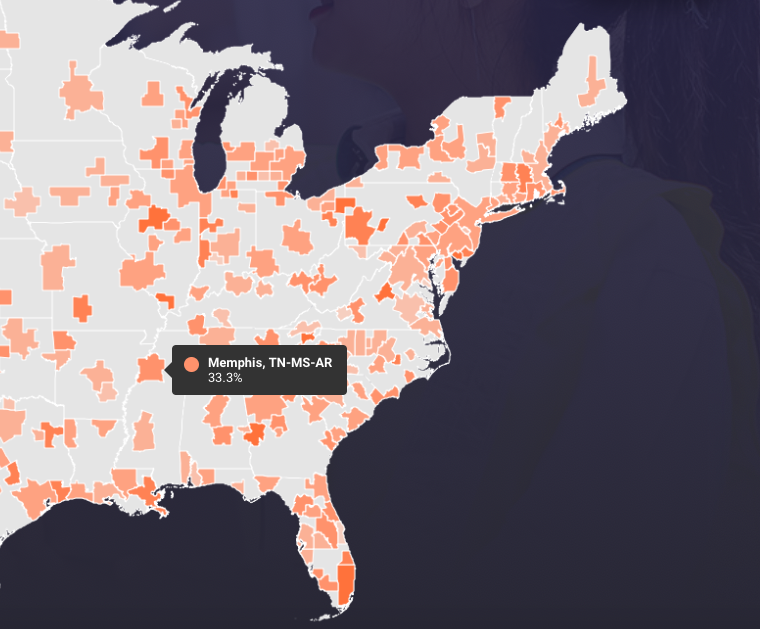Memphis lost more living-wage jobs during the pandemic than most metros around the country, according to a new analysis from a think tank focused on economic equity for the middle and lower class.
Memphis ranked in the top largest metros for the loss of jobs paying $20,000 per year or more, according to a new report from the Ludwig Institute for Shared Economic Prosperity (LISEP). The city is listed alongside Atlanta, Boston, Los Angeles, Bridgeport (Connecticut), Knoxville, and Birmingham. However, 84 of the country’s largest cities posted losses in living-wage jobs, according to the report.
“Too many Americans remain functionally unemployed in all regions of the U.S., but some regions have done better, proving that recessions, like economic recoveries, are not created equal,” said LISEP chairman Gene Ludwig. “If policymakers are to make decisions to facilitate an equitable recovery, it’s important for them to be aware of the disparities these data show. And these data are much more revealing about the economic picture of these local areas than headline economic data.”
LISEP also offers a “true” unemployment picture that goes further to define unemployment than the federal Bureau of Labor Statistics (BLS). The institute’s True Rate of Unemployment (TRU) includes those in “functional unemployment,” or those working jobs that pay below $20,000 a year. Those working these kinds of jobs — the functionally unemployed — rose by 10.78 percent in Memphis from 2019 to 2020, according to the LISEP report.
According to the federal BLS data, the Memphis area’s unemployment rate was 4.6 percent in January 2020, rose to a high of 12.3 percent in July 2020, and settled to 6.9 percent in December 2020. Preliminary data from the federal government has the Memphis unemployment rate at 4.9 percent for September, based on the latest figures.
However, the city’s overall “true” unemployment rate, according to LISEP analysis, was 33.3 percent last year. This larger figure includes those who are functionally unemployed, looking for a full-time job (35+ hours) but unable to find one, and those who are unemployed. The number also includes military personnel, federal government employees, retirees, handicapped or discouraged workers, and agricultural workers, all of which are not included in the federal unemployment number.
“Memphis’ situation can, in part, be attributed to a high share of entertainment and leisure workers, a sector that was vulnerable to the pandemic as well as the area’s Black population, which has generally suffered more functional unemployment all over the country than the white population,“ reads the report.
Federal data puts Tennessee’s unemployment rate for 2020 at 7.4 percent. However, LISEP’s “true” formula puts the number at 54.3 percent.
